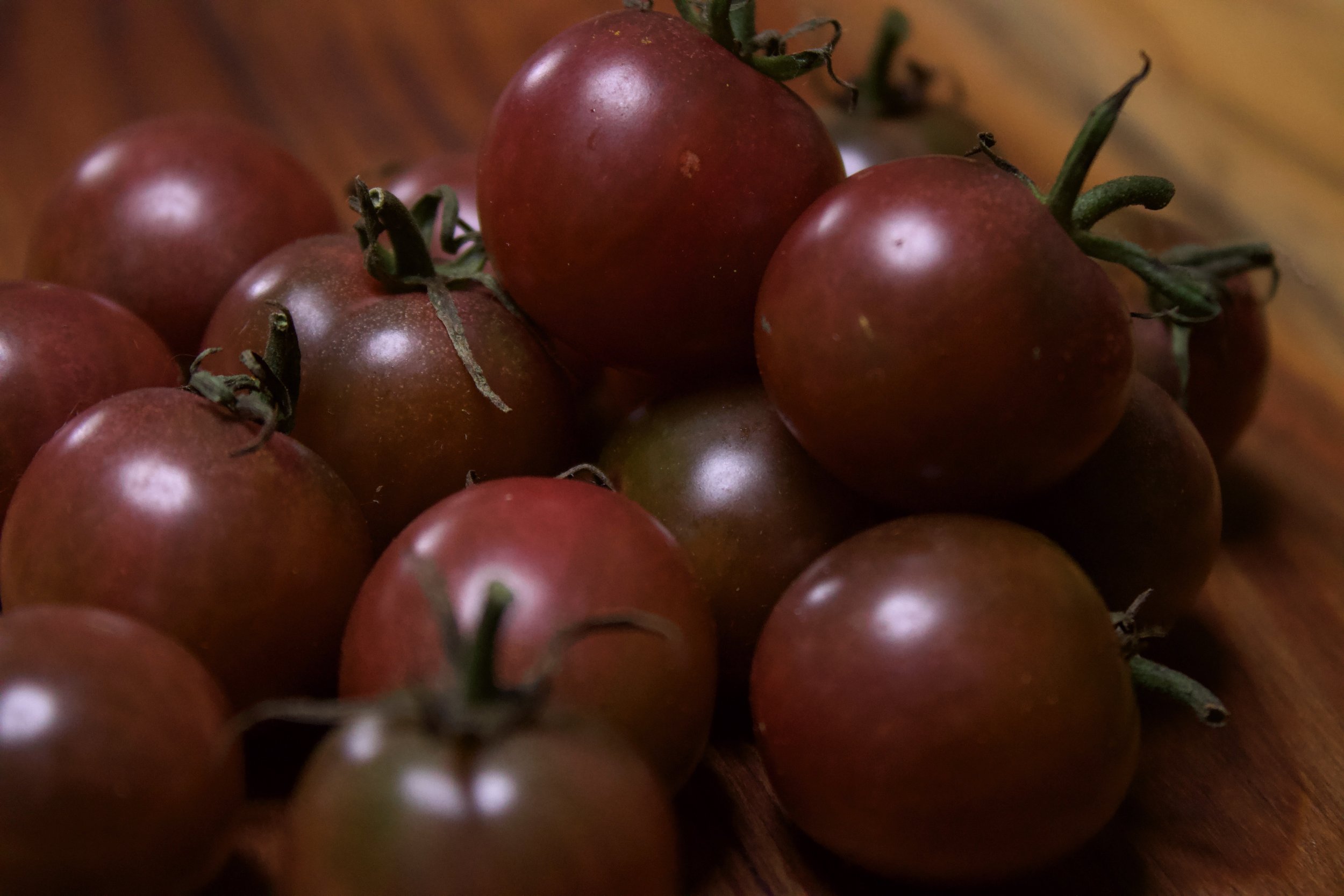Solanum pimpinellifolium
Small pink wild currant-type tomatoes. The consumption of this tomato goes back many hundreds of years, but presumably much longer than that. They were found growing wild throughout the Everglades and is a major part of the customary cuisine of the Seminole and Miccosukee, used in stews, soups and also for its medicinal properties. As a wild self-seeding plant, Florida Wild Everglades has adapted to a very challenging environment and yearly cycles of natural selection has made it remarkably disease resistant— seemingly impenetrable from our experiences! One of the few types of tomatoes to thrive in the heat and humidity of Florida. Like others types of currant tomato, plants are loaded with fruits and tend to have a sprawling growth habit. We recommend trellising but not pruning due to its wild nature. It grows so vigorously that we find pruning to be too much upkeep. Better to let the plant express itself and harvest all of the fruit that it produces so readily! Everglades continues to produce delicious fruits well into our cold and wet Octobers, long after other varieties have stopped producing. As with other wild Solanums, there is a very pronounced tomato flavor that really packs a punch in such a tiny fruit. One of our favorites for its sweetness and robust flavor. We really recommend Everglades and all currant-type tomatoes for those who struggle with tomato diseases or those who experience extreme weather patterns such as heat, humidity and drought— to which it is equally equipped to thrive in!
Growing Instructions:
Start Indoors 6-8 weeks before transplanting to the field after chance of last frost. If growing in a greenhouse sow 8 weeks before desired transplant date.
Plant spacing: 18" apart.
Row spacing: 28" to 32" apart
*If planting multiple rows we recommend alternating row spacing at 24 inches and 48 inches. The 24 inch row will be space for a trellis and the 48 inch row will be the walking path. This not only maximizes garden space, but also allows you to trellis two rows of tomatoes on one trellis.
There are many trellising systems and ways of pruning and caring for tomatoes. We encourage you figure out what makes the most sense for you, don't be afraid to experiment. We prefer double leader pruning with an overhead T-post and wire trellis for our field tomatoes.
Give tomatoes plenty of compost at time of planting. We also recommend a fall or spring cover crop of peas or another annual legume that will fix nitrogen for the tomato crop.
Mulching tomatoes is a good idea, however mulching in mid spring will keep soil temperature cooler and may slow growth. Mulching can be done once soil has warmed. Make sure soil pH is between 5.8 and 7.0. If plant needs a growing boost, water with nitrogen tea or compost tea a few times. If trace minerals are inadequate, sprinkle a small amount of woodash or azomite in each planting hole.
Harvest:
Harvest when tomatoes turn their full color or just shy of. If frost threatens or tomatoes fall off the vine they can be ripened indoors or in a protected location though their flavor may not be as pronounced.










